Unit 1 He is playing the suona, but the phone rings. 课件(31张PPT)
文档属性
| 名称 | Unit 1 He is playing the suona, but the phone rings. 课件(31张PPT) | 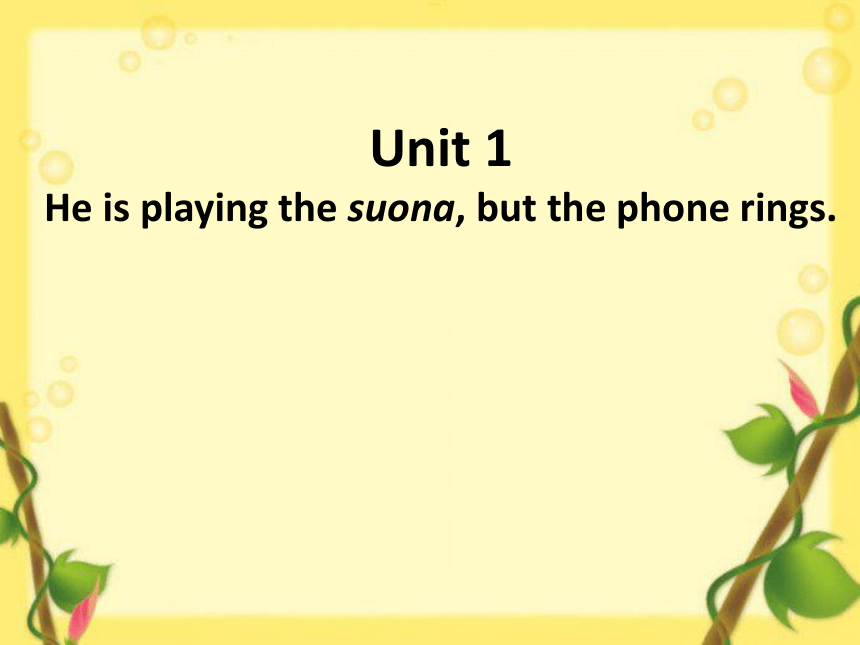 | |
| 格式 | zip | ||
| 文件大小 | 1.5MB | ||
| 资源类型 | 教案 | ||
| 版本资源 | 外研版(三年级起点) | ||
| 科目 | 英语 | ||
| 更新时间 | 2019-03-09 07:51:35 | ||
图片预览

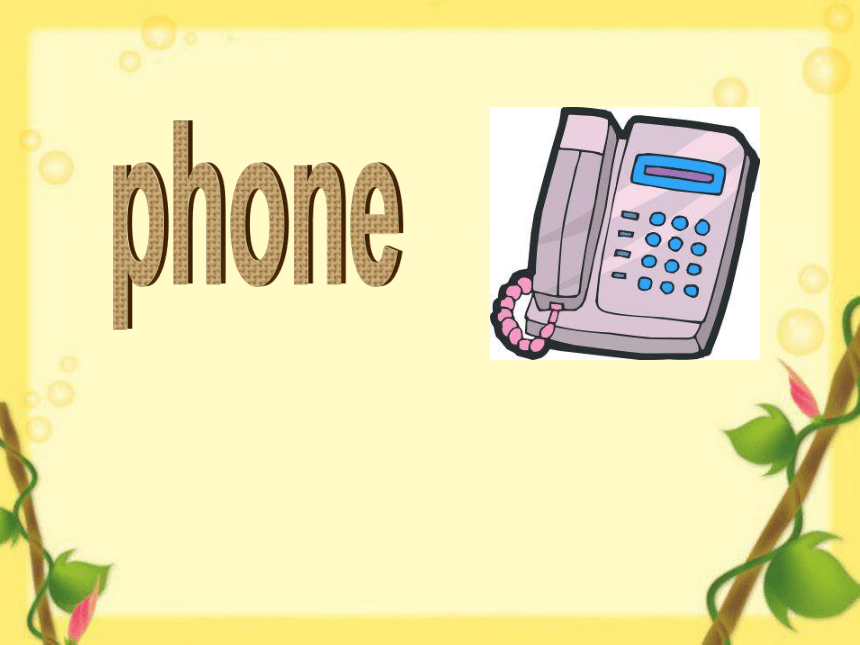
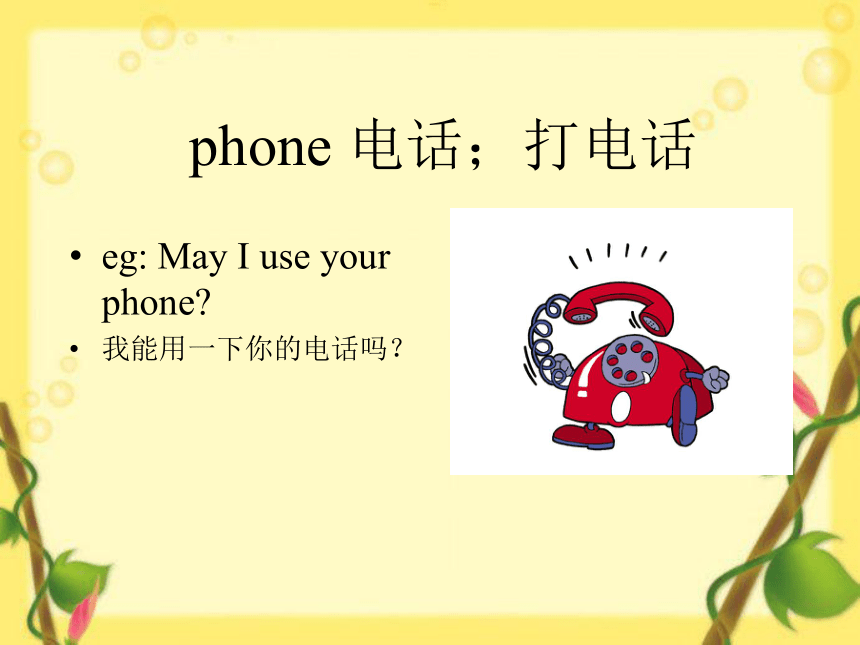
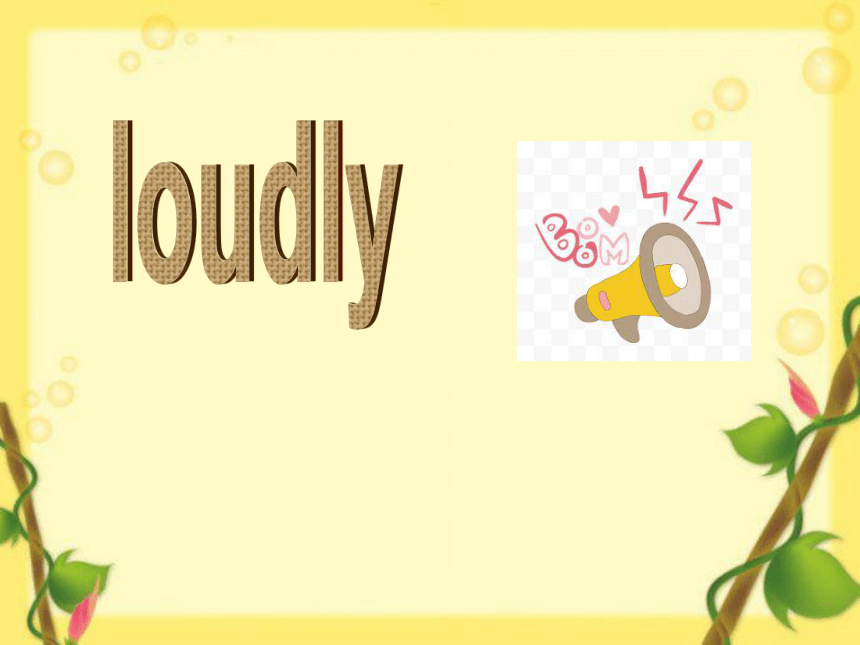
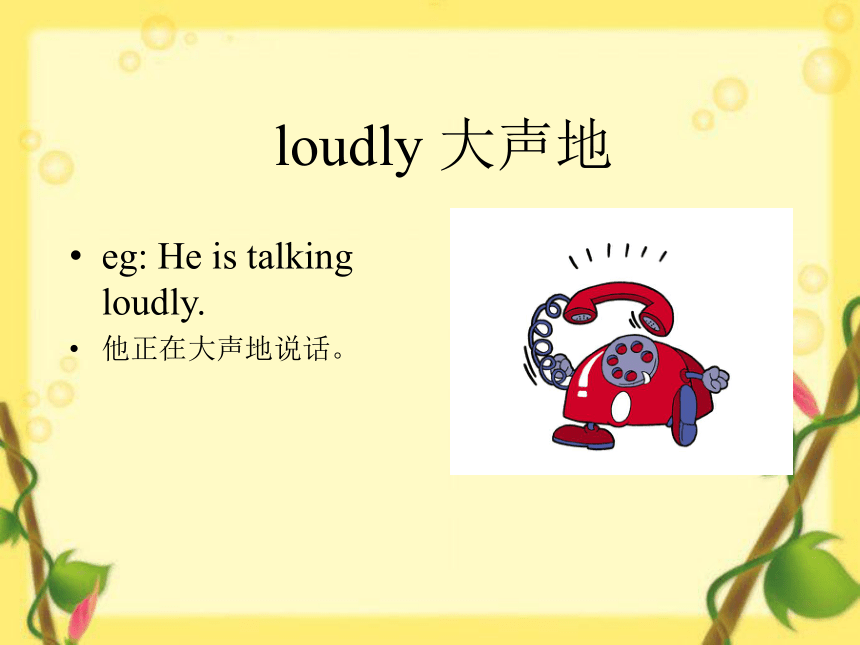
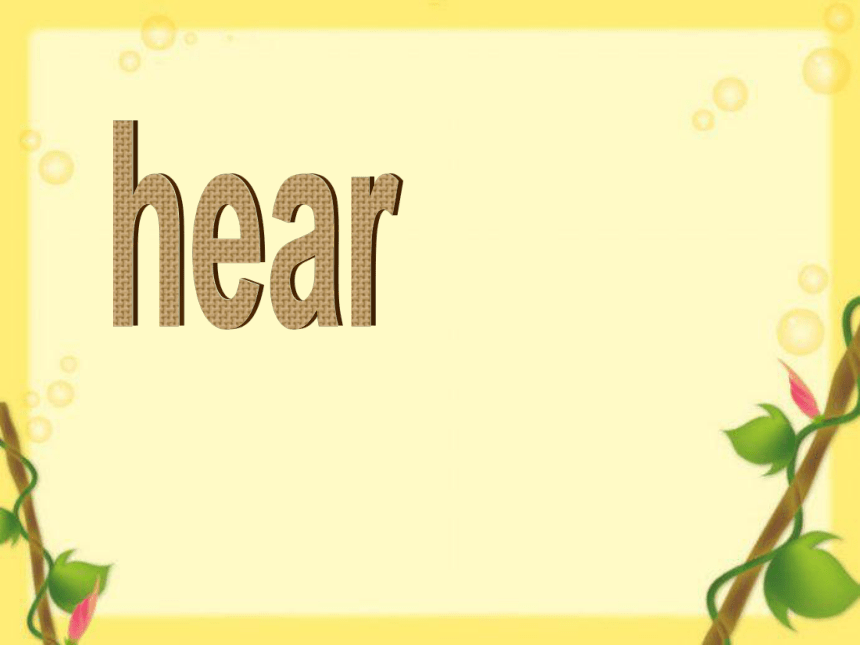
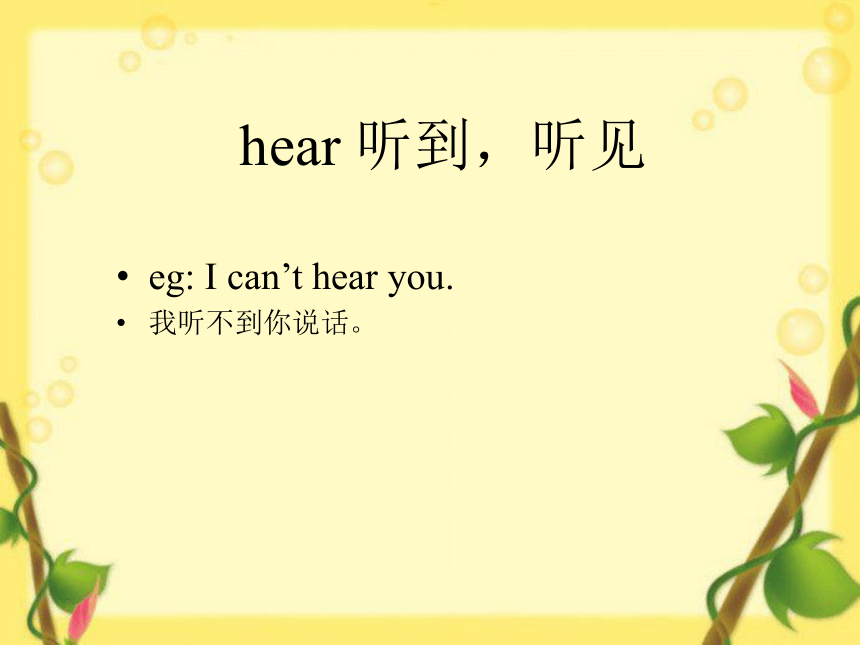

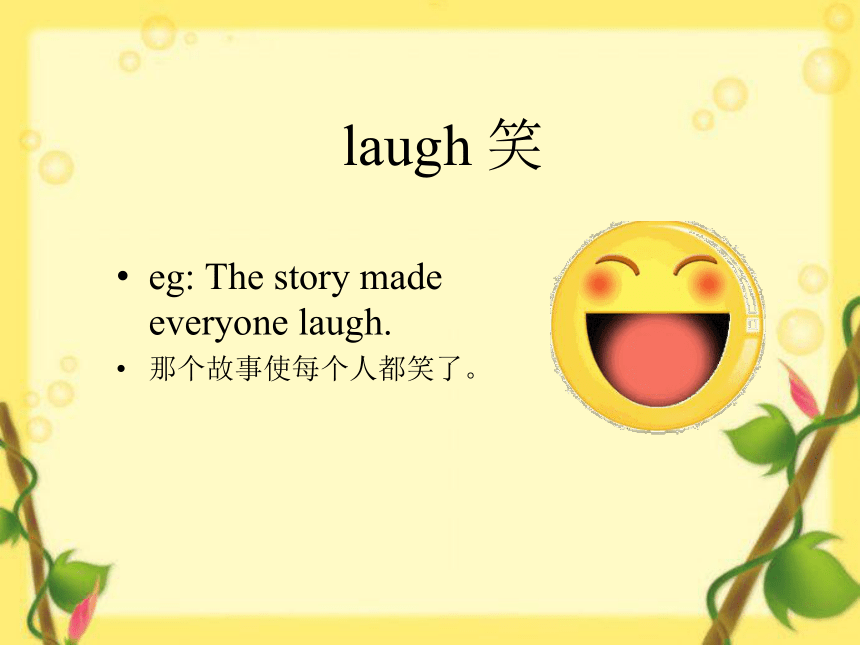
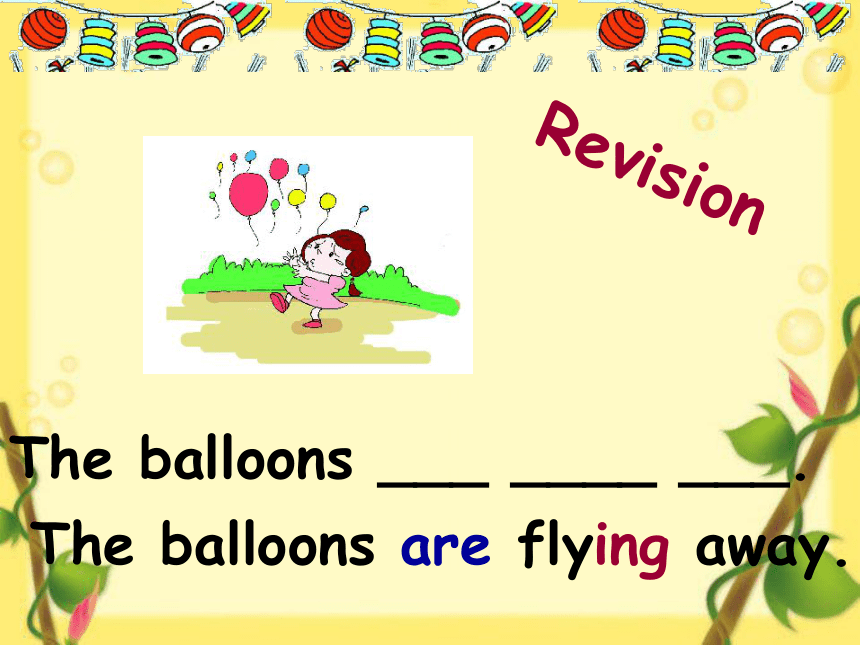
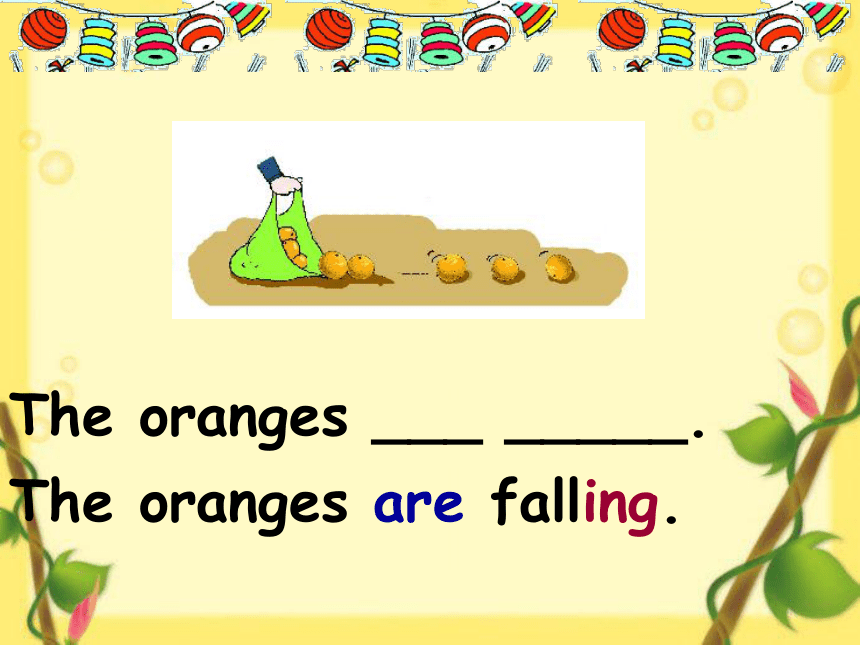
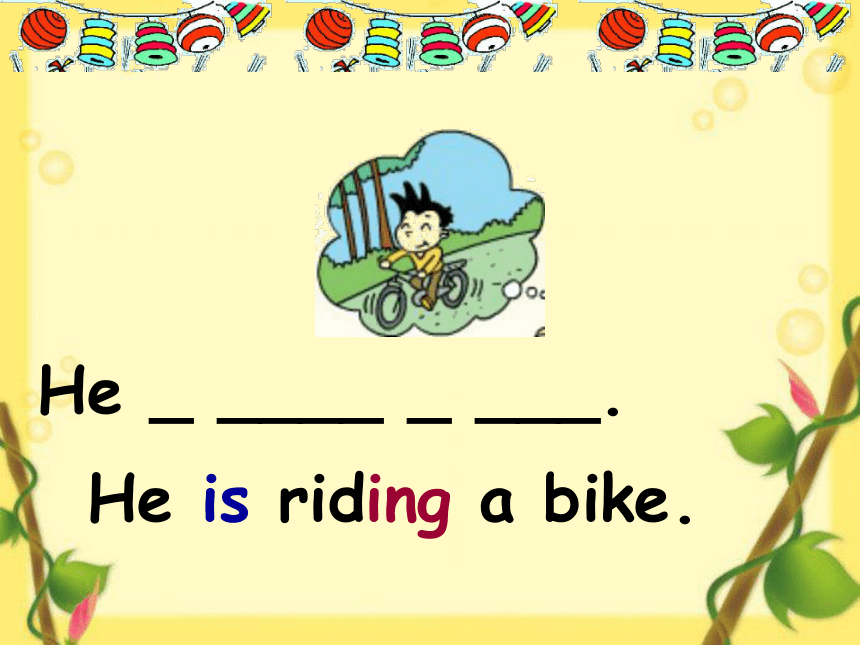
文档简介
课件31张PPT。Unit 1
He is playing the suona, but the phone rings.phonephone 电话;打电话eg: May I use your phone?
我能用一下你的电话吗?loudlyloudly 大声地eg: He is talking loudly.
他正在大声地说话。hearhear 听到,听见eg: I can’t hear you.
我听不到你说话。laughlaugh 笑eg: The story made everyone laugh.
那个故事使每个人都笑了。RevisionThe balloons ___ ____ ___.The balloons are flying away.The oranges ___ _____.The oranges are falling.He _ ____ _ ___.He is riding a bike.They ___ _______.They are swimming.The apples ___ ______ down the stairs.are falling The cola __ ______ , too.is falling Fangfang __ ______ the flute.is playing 演奏乐器: play the…Daming __ ______ the trumpet.is playing play the trumpetLook, listen and say.It’s raining. What are they doing? They’re singing and dancing.
They’re having a party. They are very happy, but we are not! It’s very cold!Listen and read.Daming is having a birthday party. He is playing the suona, but the phone rings. He stops and everyone waits.Daming is playing the suona again, but the bell rings. “Stop!” says Simon. Daming stops. More friends come in. Simon’s dog comes in too.
Daming is playing the suona for the third time, but the dog starts to bark very loudly. His friends can’t hear him. “Stop!” Simon says. The dog stops. They all laugh.Listen and say.Daming is playing the suona,
but the phone rings. Daming is playing the suona again, but the bell rings.Practsie.Look and complete the sentences.He’s crossing the street, He’s eating dinner, She’s talking to her friend, She’s doing her homework, a car comes. the bell rings. the phone rings. her brother starts to play the flute. but如何表达:
“当某人正在做某事的时候,另一件事情突然发生”呢?I am talking,
but the phone rings.(现在进行时)(一般现在时)我正在谈话,这时突然电话响了。例如: 我正在看电视,这时一个朋友来了。I am watching TV ,but a friend comes.主语+be+v-ing+其他, but+主语+动词原形/动词三单+其他. be+动词ingamisare表示正在发生的动作或存在的状态,通常与now连用。
基本形式:She__ _______, but the _________ _____.isreadingtelephonerings一般现在时动词作谓语的时侯有两种形式:动词原形;如: enjoy
第三人称单数动词形式;如: enjoys结构:主语 + (+其它)。{行为动词原形行为动词后面+s或es
第三人称单数:he , she it,人名如:We play football.
He plays football. 一般现在时:表示经常发生的事情,动作或存在的状态
主语+动词过去式+其他描述过去发生的事情或动作。句子中,通常会出现yesterday; last…; …ago等 一般过去时:基本结构:动词变过去式规则变化:动词后面+ed,如:play---played不规则变化:规则动词的过去式变化如下: 1、一般情况下,动词词尾加 -ed ,
如:watch ---watched play---played 2、以不发音的 -e 结尾动词,动词词尾
加 -d,如: live---lived hope---hoped
3、以辅音字母 + y结尾的动词,
把-y变为-i 再加-ed,如: study---studied carry---carried 4、以一个辅音字母结尾的重读闭音节
动词,双写词尾辅音字母,再加 -ed,
如: stop ---stopped finished
gave
made
thanked
wasfinish完成
give 给
make 制作
thank谢谢
is 是动词原形动词过去式am/is ---- was ; are----were ;
do----did; go----went ;
buy-----bought; fall-----fell;
have----- had; get------got
learn----learnt teach-------taught
send-----sent, give------gave
can-----could write------wrote
drink-----drank drive-----drove
see-----saw wear-----wore
make ------made ride------rode
tell---told take----took
say----said
He is playing the suona, but the phone rings.phonephone 电话;打电话eg: May I use your phone?
我能用一下你的电话吗?loudlyloudly 大声地eg: He is talking loudly.
他正在大声地说话。hearhear 听到,听见eg: I can’t hear you.
我听不到你说话。laughlaugh 笑eg: The story made everyone laugh.
那个故事使每个人都笑了。RevisionThe balloons ___ ____ ___.The balloons are flying away.The oranges ___ _____.The oranges are falling.He _ ____ _ ___.He is riding a bike.They ___ _______.They are swimming.The apples ___ ______ down the stairs.are falling The cola __ ______ , too.is falling Fangfang __ ______ the flute.is playing 演奏乐器: play the…Daming __ ______ the trumpet.is playing play the trumpetLook, listen and say.It’s raining. What are they doing? They’re singing and dancing.
They’re having a party. They are very happy, but we are not! It’s very cold!Listen and read.Daming is having a birthday party. He is playing the suona, but the phone rings. He stops and everyone waits.Daming is playing the suona again, but the bell rings. “Stop!” says Simon. Daming stops. More friends come in. Simon’s dog comes in too.
Daming is playing the suona for the third time, but the dog starts to bark very loudly. His friends can’t hear him. “Stop!” Simon says. The dog stops. They all laugh.Listen and say.Daming is playing the suona,
but the phone rings. Daming is playing the suona again, but the bell rings.Practsie.Look and complete the sentences.He’s crossing the street, He’s eating dinner, She’s talking to her friend, She’s doing her homework, a car comes. the bell rings. the phone rings. her brother starts to play the flute. but如何表达:
“当某人正在做某事的时候,另一件事情突然发生”呢?I am talking,
but the phone rings.(现在进行时)(一般现在时)我正在谈话,这时突然电话响了。例如: 我正在看电视,这时一个朋友来了。I am watching TV ,but a friend comes.主语+be+v-ing+其他, but+主语+动词原形/动词三单+其他. be+动词ingamisare表示正在发生的动作或存在的状态,通常与now连用。
基本形式:She__ _______, but the _________ _____.isreadingtelephonerings一般现在时动词作谓语的时侯有两种形式:动词原形;如: enjoy
第三人称单数动词形式;如: enjoys结构:主语 + (+其它)。{行为动词原形行为动词后面+s或es
第三人称单数:he , she it,人名如:We play football.
He plays football. 一般现在时:表示经常发生的事情,动作或存在的状态
主语+动词过去式+其他描述过去发生的事情或动作。句子中,通常会出现yesterday; last…; …ago等 一般过去时:基本结构:动词变过去式规则变化:动词后面+ed,如:play---played不规则变化:规则动词的过去式变化如下: 1、一般情况下,动词词尾加 -ed ,
如:watch ---watched play---played 2、以不发音的 -e 结尾动词,动词词尾
加 -d,如: live---lived hope---hoped
3、以辅音字母 + y结尾的动词,
把-y变为-i 再加-ed,如: study---studied carry---carried 4、以一个辅音字母结尾的重读闭音节
动词,双写词尾辅音字母,再加 -ed,
如: stop ---stopped finished
gave
made
thanked
wasfinish完成
give 给
make 制作
thank谢谢
is 是动词原形动词过去式am/is ---- was ; are----were ;
do----did; go----went ;
buy-----bought; fall-----fell;
have----- had; get------got
learn----learnt teach-------taught
send-----sent, give------gave
can-----could write------wrote
drink-----drank drive-----drove
see-----saw wear-----wore
make ------made ride------rode
tell---told take----took
say----said
同课章节目录
- Module 1
- Unit 1 I want a hot dog,please.
- Unit 2 What do you want to eat?
- Module 2
- Unit 1 When are you going to eat?
- Unit 2 It will snow in Harbin
- Module 3
- Unit 1 The sun is shining.
- Unit 2 The cows are drinking wate
- Module 4
- Unit 1 The balloons are flying away!
- Unit 2 The apples are falling down the stairs
- Module 5
- Unit 1 He is playing the suona, but the phone ring
- Unit 2 He's riding his bike,but it's starting to r
- Module 6
- Unit 1 It was Daming's birthday yesterday.
- Unit 2 The name of the spaceship is Shenzhou V.
- Module 7
- Unit 1 He spent about twenty-one hours in space.
- Unit 2 She couldn't see or hear .
- Module 8
- Unit 1 Why do you have cups on your heads?
- Unit 2 Why are you wearing a hat?
- Module 9
- Unit 1 Best wishes to you.
- Unit 2 Wishing you happiness every day.
- Module 10
- Unit 1 We are going to different schools.
- Unit 2 What are you going to study?
- Review Module
- Unit 1
- Unit 2
